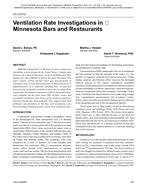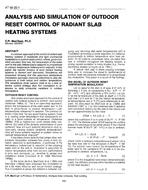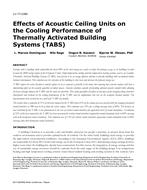Click here to purchase
Low-rise, wood-framed homes are the most common type of residential structures in the United States. Wood wall construction supports roofs efficiently and provides a stable frame for attaching interior and exterior wall coverings. Wall cavities are prevalent and increase thermal resistance, particularly when they are filled with insulating material. This paper describes detailed computational fluid dynamics modeling to evaluate the thermal performance of uninsulated or partially filled wall cavities and accounts for conduction through framing, convection, and radiation. Parameters are ambient outdoor temperature, cavity surface emissivity, cavity aspect ratio, and insulation height. Understanding the thermal performance of uninsulated or partially insulated wall cavities is essential for conserving energy in residential buildings. The results can serve as input for building energy simulation tools such as DOE2 and EnergyPlus for modeling the temperature dependent energy performance of new and older homes with uninsulated or partially insulated walls.
Citation: ASHRAE Conference Papers, Montreal, QC
Product Details
- Published:
- 2011
- Number of Pages:
- 9
- File Size:
- 1 file , 1.1 MB
- Product Code(s):
- D-ML-11-C012


